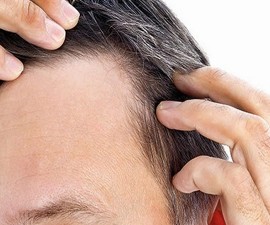Receding hairline is commonly found in adults, though it can also occur too early before the age of 20 in a few cases. It’s male hair loss problem, especially for those with male pattern baldness. It’s very rare in women, including for those with female pattern baldness. Interestingly, some newborns can have it, too. Why does baby have it? Should you concern it seriously?
Baby with receding hairline, how common is it?
Babies can have an amazing variety of hair patterns. It’s quite common to see thinning hair on the back of the head, while some may have thick locks and everything in between.
Receding hairline in newborn is also quite common. Even some may look bald as a cue ball.
Generally, most newborns are likely to have two crops of hair in their first 12 months. In some cases, the fist growth fails to keep growing before the second appears. As a result they’re going bald, sometimes even this has occurred before birth. In other cases, the second growth occurs while the first is falling out but it’s still hardly to notice.
Does it matter?
Again, the hair patterns of newborn can vary a lot. As mentioned before, not all of them are born bald – some can also have a quite thick hair.
But in general, the baby’s hair (including those with a shock of thick hair) will experience a bad hair day in the first few months after birth. It’s not uncommon to see their first year hair with a scraggly style of a little Homer Simpson, tufted patches, or even a punk-style Mohawk.
And this is perfectly normal- there should nothing to worry! As long as the hair shaft and scalp look normal, it is not for concern. It is a part of the normal development process of your baby’s hair growth.
Whatever the hairstyle your newborn looks like, don’t worry too much. Baby hair dos are hair today, bad hair day (gone) tomorrow!
About cradle cap
However, there are also some conditions that can affect your newborn’s hair in the first few of years after born. One of them could be cradle cap.
Cradle cap is typically characterized by oily, crusty scaly patches on the scalp. It is not itchy. It doesn’t cause pain, too. But it can lead to thick yellow or white scales that are difficult to remove.




